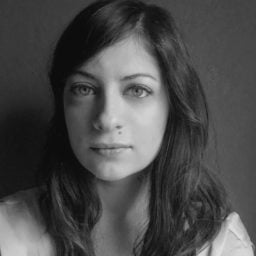Few filmmakers have a style as distinctive as that of Spanish director Pedro Almodóvar. Since the early 1980s, his black comedies and melodramas have layered maximalist costumes onto Pop-colored sets, populated by campy characters whose identities shift over the course of a film as frequently and dramatically as the brightly colored paint on the walls.
This is also the unmistakably Almodóvarian aesthetic of his photography, a side practice that he says is all about making “pleasant” pictures, but is still something more than a hobby. In his latest show, “Waiting for the Light” (through June 29 at Marlborough Gallery in New York), he pairs wilting flowers against vividly painted backdrops to create a series of still-life compositions that are inspired more by the history of painting than photography.
He pays direct tribute to Morandi and Velázquez in the titles of these works, but there are also hints of the still-life paintings of Spanish Surrealist Maruja Mallo, one of Almodóvar’s favorites. In fact, Spanish art history—and particularly the post-Franco figurative movement that he calls the “Naked Period”—is a central theme of his new film, Pain and Glory, which is about an isolated filmmaker (played by Antonio Banderas) living alone in the company of his art collection.
artnet News spoke to Almodóvar at Marlborough on the day of his opening about the new film, the artists who inspire him, and why he doesn’t mind being called a “decorative” artist.
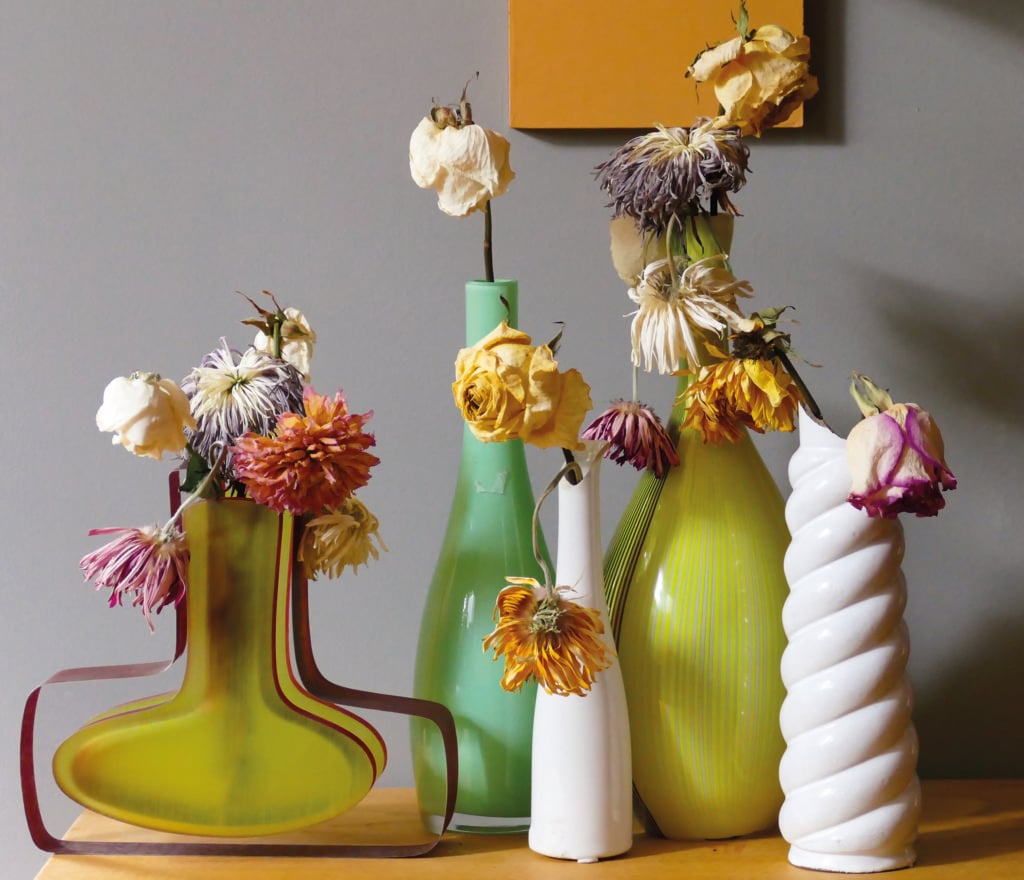
Pedro Almodóvar, Explosion of Spring 1 (2018).
Your new film, Pain and Glory, is about an aging film director while your new series of photographs depict decaying flowers. Has the passage of time been on your mind lately? Is there a relationship between the film and the photos?
As a filmmaker, yes, the passage of time is something that affects me a lot. Actually the new movie talks a lot about the passage of time—the fact of being older and also the pain within it. But I don’t get the feeling that these are like corpses of flowers. For me they are very alive because when they are completely dry, for me, they have much more movement; they’re more dynamic. I find dried flowers to be a lot more photogenic and pictorial in all their stages of decay because I’ve worked with them throughout their whole wilting stage. Flowers become a lot more painterly and interesting as they begin to wilt.
I’m interested in it purely from a visual perspective. I’m not trying to make a statement or reflection on the transient nature of death, or the death of nature, or our own death. My aim with the pictures was really to create pleasant pictures that could co-inhabit with the person who has them on their wall. I wasn’t going for a shock factor. I’m trying to attain a beauty that can coexist in a pleasant life with the person. I really wouldn’t be offended if you described it as decorative art.
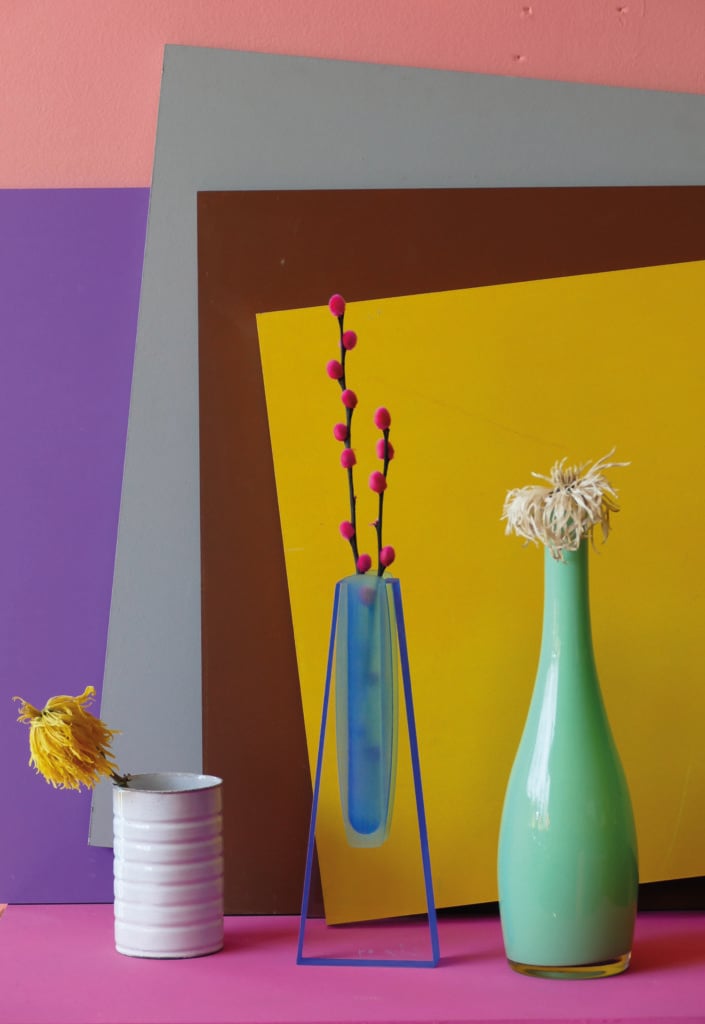
Pedro Almodóvar, Backgrounds in Movement 1 (2019).
You sometimes refer to your flowers as “protagonists,” like you might talk about characters in a film.
Yes, some of the compositions do revolve strongly around the flower and, in that case, I do treat it as a protagonist. Others are more about the ambiance or the composition as such and in that case there isn’t a clear protagonist.
[Pointing to Backgrounds in Movement 1, pictured above] These are wooden boards I had painted in different colors. At one point I got bored with the very straight arrangement of one vertical one horizontal so I started switching it up and playing with different boards painted in different colors, so in this case it’s the composition that would be the protagonist because it’s really the interplay between the oblique boards and the three vases and the flowers.
But they do look a little anthropomorphic sometimes, with the petals wilting like hair.
[Laughs] Yes, that one could be Warhol [pointing to the white flower].
Or it could be you! Some of your titles in this show reference art history, like Morandi and Las Meninas. How did they influence this body of work?
The key to this whole work is the patience in waiting for those two or three minutes when the light falls a certain way and really enhances and heightens the objects and makes them more beautiful than they otherwise are. And in that sense, I won’t compare myself to him, but Velázquez worked with light in the same way. It’s a very painterly approach. It means you really have to wait for light as it comes in the window. That’s how he painted and that’s why I titled this show “Waiting for the Light,” because there’s that sense of waiting or expecting the light to come in. It’s not photographic in the sense of seeking hyper-realism. In fact what I was looking for was that very painterly effect of the classical age of still lifes.
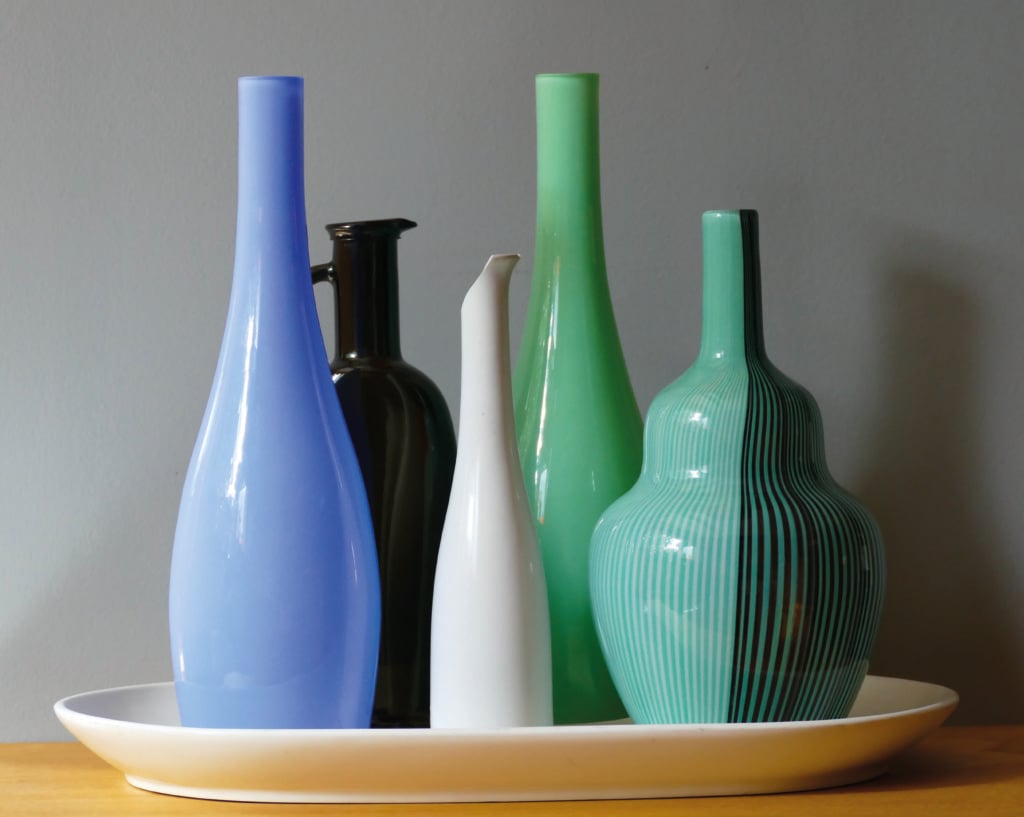
Pedro Almodóvar, To Morandi (2018).
As I was working on this I was getting the urge to paint so I asked the guy who paints my house to paint the walls different colors, but I kept needing more. So I got these wooden squares and had those painted a whole range of colors and started playing with them and switching them up and combining the bases and the background. In the ones that have two colors in the background, there is a conscious inspiration of David Hockney and his seated portraits, which have two colors in the background. But as I kept working I just kept needing to paint, so there is a lot of painting going on in the photographs in the sense that all the wooden surfaces are painted. So perhaps the next step is to actually start to paint, but I don’t know how to do it. I don’t have the technique.
There are also cinematic nods to painters like David Hockney and Edward Hopper in your films. Do you plant those references intentionally?
Yes. I find it relatively straightforward because I’m very used to arranging colors and objects. I’m the art director of all my movies. Even though someone else signs off, I really do all the décor. I really feel like a painter whose palette is a range of three-dimensional objects, with their colors and their shapes. So the first decision is the color of the wall and then the color of the floor because those are the two largest surface areas that are going to be in the frame. Then I start selecting one piece of furniture, then another piece, and then I keep switching them up. I choose a couch, then a chair, and then I place the actress in the chair and then I start playing with what she’s wearing, the colors of the outfit and the fabrics, the upholstery. It’s all a very artisanal process. I do feel like I’m playing around with these things the way a painter would use the colors in his palette.
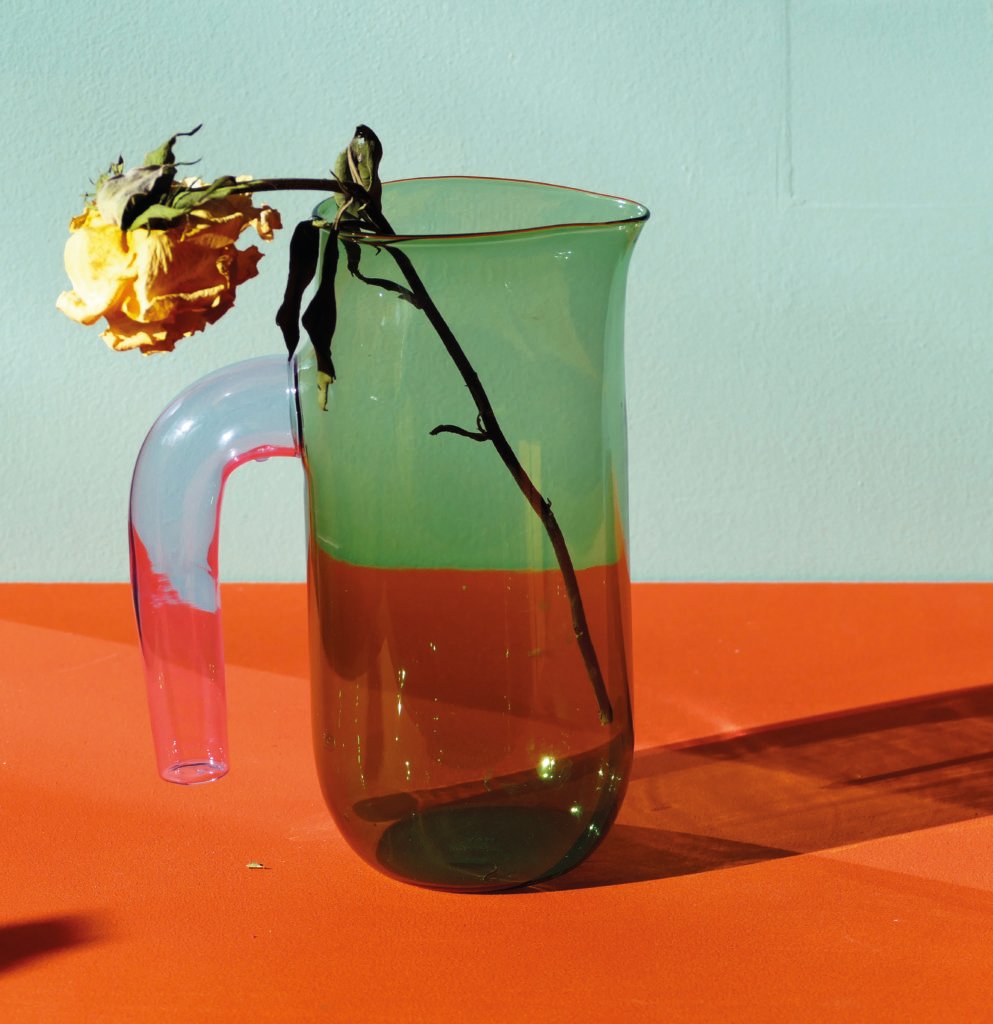
Pedro Almodovar, Change of Base 1 (2018).
Are there any references to artists in the new film?
Yes, many. The movie will reflect many parts of my life. I have a small, humble collection of paintings, and the paintings in this movie are extremely important—more important—than in any of the other 20 films I’ve done. The paintings I chose were from Spanish artists from the late ’70s who were starting around the same time I was. Now they’re all great masters: Manuel Quejido, Guillermo Perez Villalta, Sigfrido Martin-Begue. Many of us got started at the same time, but they grew up fantastically and are now very important in Spain. But I wanted to include them because I feel very close to them and because the movie reflects that period. Also because I love them.
The main character lives in isolation for circumstances that are explained in the movie and at one point in he says, “I live on my own, in isolation, only in the company of these paintings on my wall.” So these paintings really do play an important role. I increasingly use paintings for dramatic effect, for an interaction with a character standing in front of it. So the paintings really are an active narrative element in the movie.
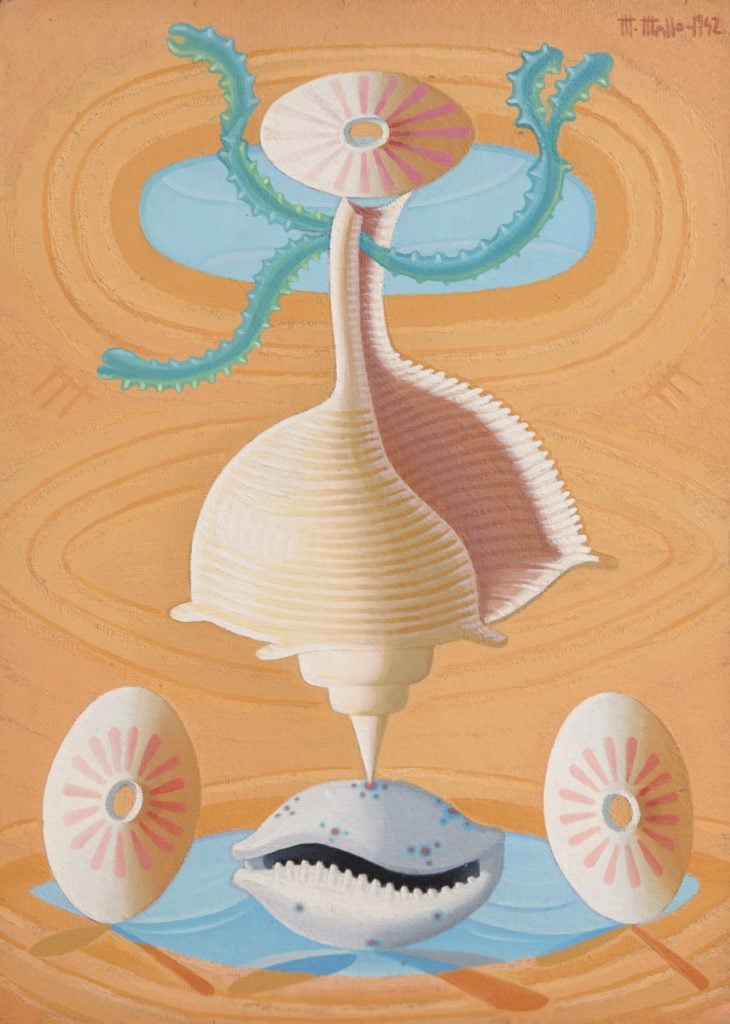
Maruja Mallo, Naturaleza Viva (1942). Courtesy of Ortuzar Projects.
How does it feel to be starting all over in a new creative field? Do you consider yourself a hobbyist in photography or do you have higher aspirations than that?
I am a multiply frustrated artist. Which is good when you’re a director because you combine all the arts in one movie. To be a good film director you need to be a frustrated artist, a frustrated painter, a frustrated decorator, a frustrated architect, a frustrated sex symbol, a frustrated actor. Being all those things makes you sensitive to all the decisions you have to bring together to be a good film director. So part of the frustrated painter in me came out and now he’s a little less frustrated. I never planned to have work in a gallery show but I’m very happy it has taken this turn. I don’t know where it’ll take me in the future. I don’t know if I’ll continue to be an artist at the same time as a film director, but it’s a great feeling to be starting out in something. It‘s extremely exciting to be making those first steps and to feel newly naïve. It’s also a distraction to the awareness that I’m over 60 years old.
Follow Artnet News on Facebook:
Want to stay ahead of the art world? Subscribe to our newsletter to get the breaking news, eye-opening interviews, and incisive critical takes that drive the conversation forward.






